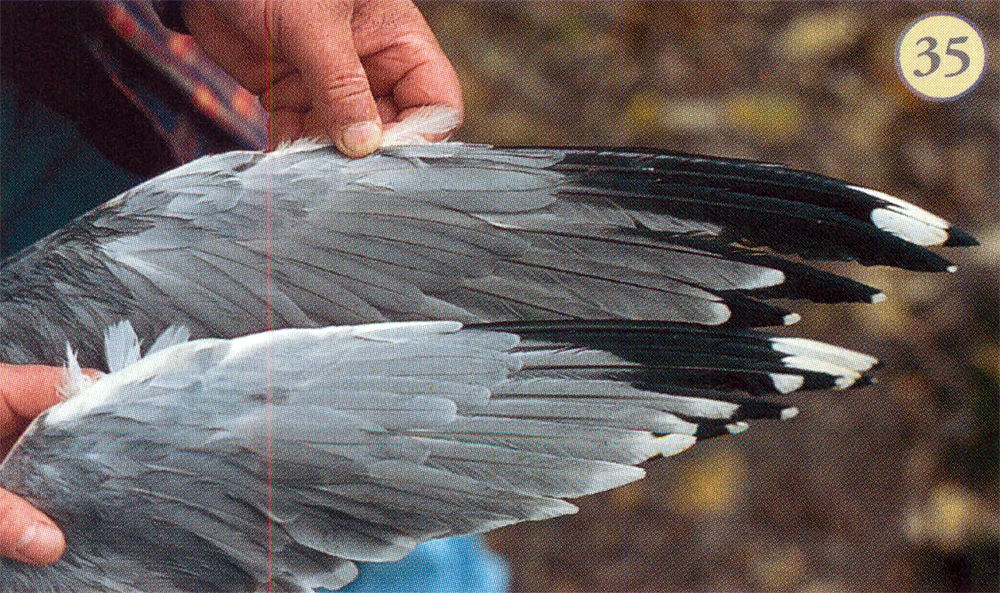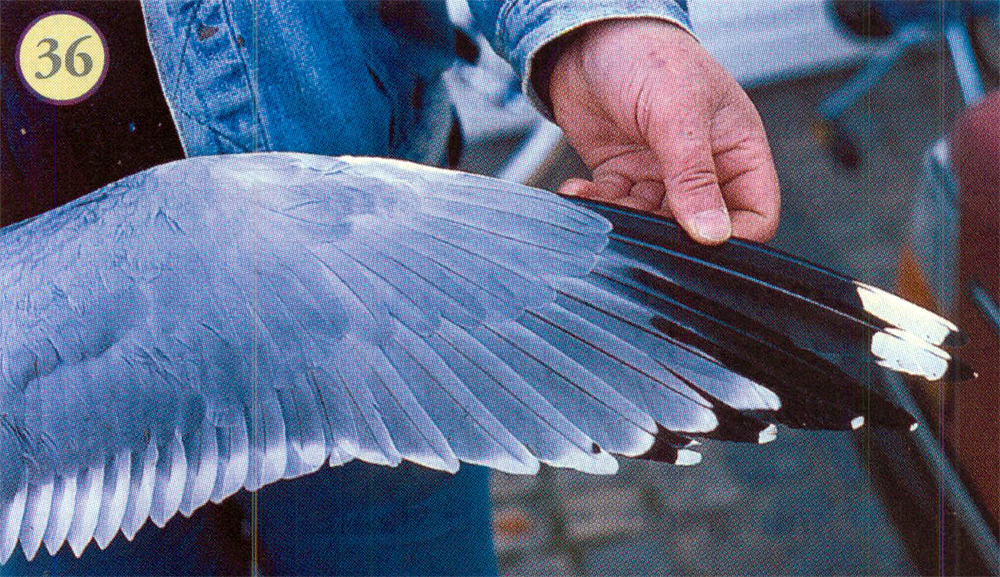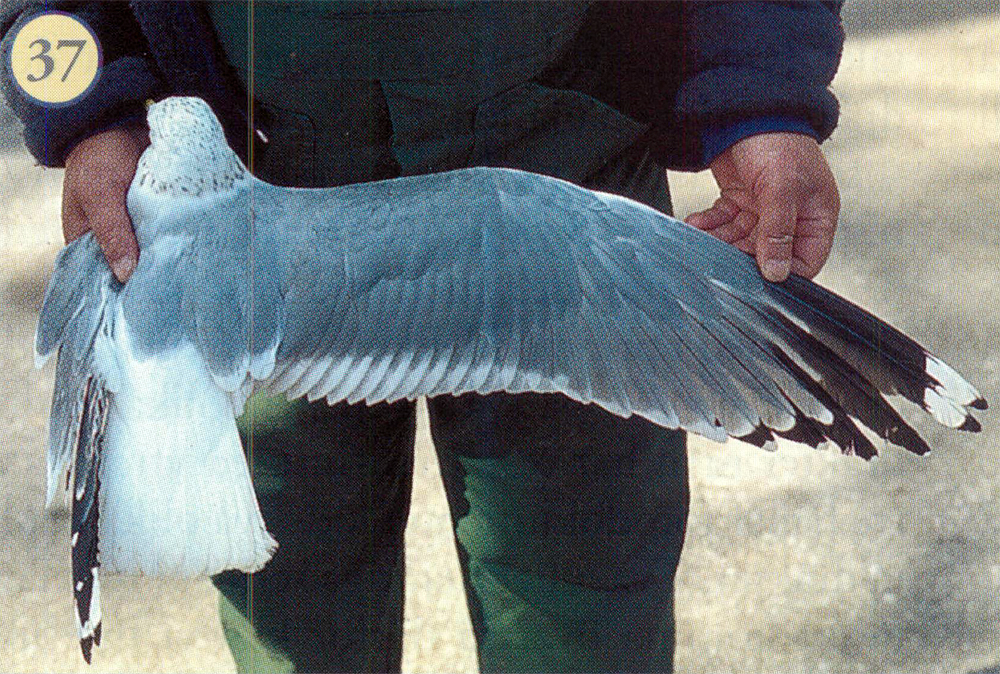 Mew Gull Larus canus canus; heinei; kamtschatschensis; brachyrhynchus
Mew Gull Larus canus canus; heinei; kamtschatschensis; brachyrhynchus
(last update: March 12, 2012)
Mew Gull heinei SVS 7145953 3cy/4cy/6cy, 19 November 1995, 25 December 1996 & 28 March 1998, Malmö, Sweden.
Figure 35: 7145953 upper bird in the image (380/91,5), same bird again in fig 36 & fig 37: three, four & five-year old bird (3CY, 4CY, 6CY), probable heinei. 19 November 1995. Originally ringed 23 October 1994. When the four-year old bird is compared to the three-year old, it appears that the mirrors and white tips on the primaries are slightly larger and this bird lost the dark alula. Obvious differences between forth and fifth plumages are not present.
In their third year Mew Gulls are almost impossible to distinguish from four years old and older birds. The average three-year birds have mirrors on P9 and P10, black on six primaries (range 5-7) and white tips on P7 and P8 (about 50% also have a white tip on P9, see fig 18). Without exception the tail is all white in three-year old birds.
Our material indicates that the Mew Gull attains a mature plumage in its fourth year (4CY-5CY). After the fourth year, only minor changes occur in the plumage resulting in slightly more white and less black in the wing-tip; for example, the mirror on P10 may merge with the white tip in some individuals. Such slight changes in wing-tip pattern are illustrated by the bird in fig 23 and fig 29, four years old and seven years old respectively.
We add a series of birds in three different adult plumages (fig 35-39). First, fig 35 (upper bird in image below) to fig 37 show a probable female heinei, aged third, fourth and fifth plumage. When we compare the four-year old bird with the three-year old, it appears that the mirrors and white tips on the primaries are slightly larger and this bird lost the dark alula. Obvious differences between forth and fifth plumages are not present.
In a very well-studied Estonian population (canus) they found that the amount of white in the wing-tip diminished in older plumages (after the sixth breeding-season). This may be explained by older birds having a weaker condition because of age, when they are compared to “middle-age” breeding birds (Kalev Rattiste and Lauri Saks, unpublished data).
Figure from:
Is it possible to age subadult Mew Gulls Larus canus?
by: Kenneth Bengtsson & Lennarth Blomquist, publication in: Anser 2-42(2003): p 73-92.

Below is figure 36: 7145953 (380/91,5), same bird in fig 35 (upper bird) & fig 37: three, four & five-year old bird (3CY, 4CY, 6CY), probable heinei. 25 December 1996. Originally ringed 23 October 1994.
When the four-year old bird is compared to the three-year old, it appears that the mirrors and white tips on the primaries are slightly larger and this bird lost the dark alula. Obvious differences between forth and fifth plumages are not present.

Below is figure 37: 7145953 (380/91,5), same bird in fig 35 (upper bird) & fig 36: three, four & five-year old bird (3CY, 4CY, 6CY), probable heinei. 28 March 1998. Originally ringed 23 October 1994.
When the four-year old bird is compared to the three-year old, it appears that the mirrors and white tips on the primaries are slightly larger and this bird lost the dark alula. Obvious differences between forth and fifth plumages are not present.
